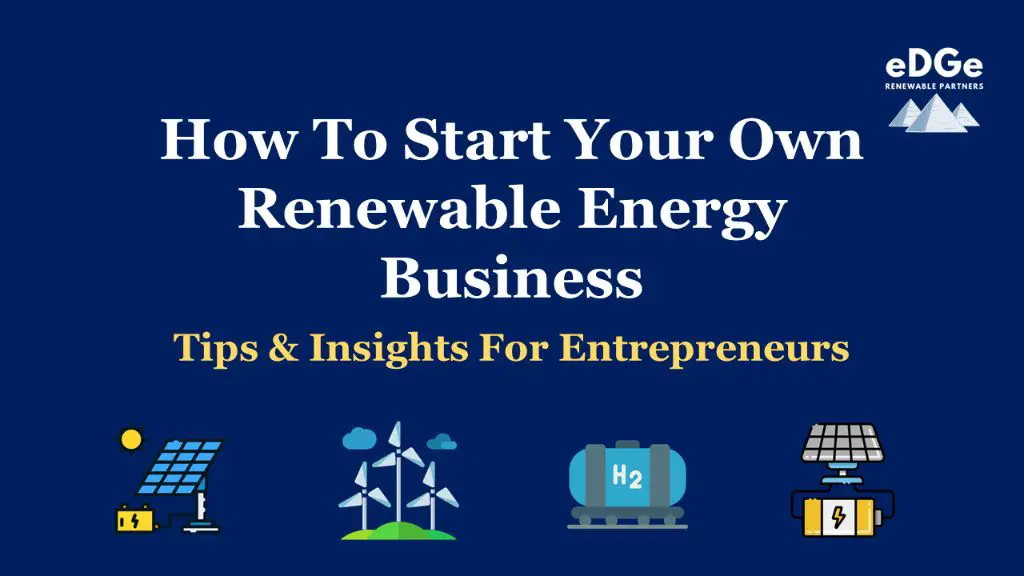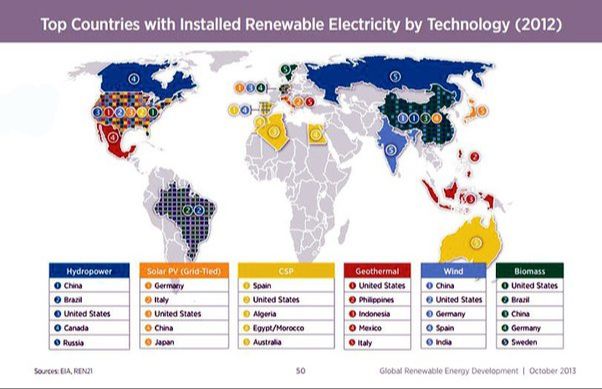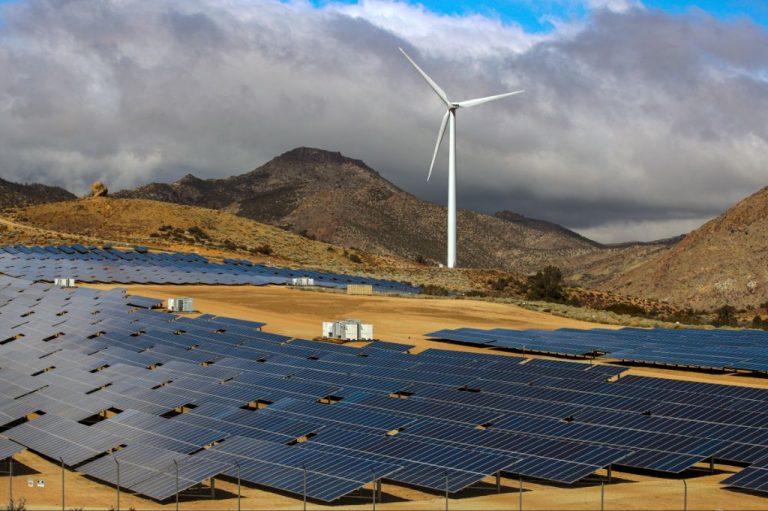How Do I Start A Renewable Energy Company?
Understand the renewable energy industry

The renewable energy industry continues to experience strong growth as the need for sustainable and environmentally-friendly energy sources increases globally. The main types of renewable energy include:
- Solar power – Using solar panels to convert sunlight into electricity.
- Wind power – Harnessing the wind with turbines to generate electricity.
- Hydropower – Generating electricity from flowing water such as dams and wave/tidal systems.
- Geothermal – Using the earth’s internal heat to produce steam and generate electricity.
- Biomass – Creating energy from organic materials including plants, agricultural waste, and garbage.
According to Grand View Research, the global renewable energy market size was estimated at $1.21 trillion in 2023 and is projected to grow at a compound annual growth rate of 17.2% from 2024 to 2030, driven by favorable government policies and dropping costs.
Some of the major players in the industry include Enel Green Power, Duke Energy Renewables, NextEra Energy Resources, Exelon Corporation, and Southern Company. Key competitors are investing heavily in wind and solar power to expand their renewable energy portfolios. For example, Statista predicts the market will surpass $2 trillion by 2030 as concerns over climate change accelerate the transition from fossil fuels.
Develop a business plan
A successful renewable energy business needs a comprehensive business plan covering key aspects like vision, mission, goals, products/services, target markets, sales strategies, and financial projections. As one source states, your plan should articulate your purpose and define your value proposition (Source).
The business plan should clearly state your vision, mission, and goals. The vision outlines what you want your company to achieve long-term. The mission describes the purpose of your company and how it provides value. Your goals then set specific objectives to fulfill the vision and mission. For a renewable energy firm, goals may include building a certain number of solar farms or offsetting a set amount of emissions (Source).
Your plan should detail the products and services you will offer. This includes the types of renewable energy you will generate, such as solar, wind, or geothermal power. It also covers any maintenance, installation, or consulting services. Define how your offerings are unique in the market (Source).
Analyze your target customers and market demand for renewable power. Identify market segments and demographics that have an appetite for clean energy. Assess the size of the market opportunity. Also consider competitive dynamics with traditional energy providers (Source).
Outline your marketing and sales strategies to reach target customers. This may involve advertising, events, partnerships, and utilizing sales teams. Develop pricing models for your offerings that provide value and generate sufficient revenue (Source).
Financial projections are key to demonstrating the viability of your renewable energy venture. Develop projected income statements, balance sheets, and cash flow statements. Account for operating expenses, capital expenditures, financing costs, and profit margins. Perform breakeven analysis and evaluate different scenarios (Source).
Choose a business structure
When starting a renewable energy company, you’ll need to choose a business structure. Some common options include:
- Sole proprietorship – You are the sole owner of the business. This is the simplest structure but you have unlimited personal liability.
- Partnership – You co-own the business with one or more partners. You divide profits, share control and have unlimited liability.
- Limited Liability Company (LLC) – You have the flexibility of a partnership but also get liability protection like a corporation. Profits pass through to owners.
- Corporation – Your business is a separate legal entity from you. You have limited liability but face more complex regulations and double taxation.
The structure you choose has tax and legal implications to consider (Source). A sole proprietorship has pass-through taxation but no liability protection. Partnerships also have pass-through taxation but allow you to share ownership. LLCs provide liability protection while allowing pass-through taxation. Corporations have the strongest liability protection but face double taxation.
Consult with legal and tax professionals to determine the best structure for your renewable energy startup based on your specific business needs and situation.
Obtain financing
Financing is crucial for getting a renewable energy startup off the ground. There are several options entrepreneurs can pursue:
Bootstrapping: Using your own funds to finance the business. This avoids taking on debt or giving up equity, but limits how much capital you have access to. Bootstrapping works best for companies with low startup costs.[1]
Venture capital: VC firms invest in early stage startups in exchange for equity. This provides significant capital upfront, but requires giving up ownership stake. VCs focus on startups with major growth potential.[2]
Loans: Banks and other lenders provide debt financing that must be paid back with interest. Loans provide access to capital without giving up ownership. However, they come with repayment obligations.
Government incentives: Federal, state, and local governments offer various grants, loans, and tax incentives for renewable energy companies. These can provide significant cost savings and subsidized access to capital.[3]
Carefully exploring all financing options and pursuing a mix of funding sources is often the best approach for renewable energy startups.
Register your business
After choosing a business name, you’ll need to register your renewable energy company with the proper authorities. This establishes your business as a legal entity and allows you to obtain licenses and permits.
First, check if your business name is available by searching state and federal databases. Then choose a business structure – most renewable energy companies operate as LLCs or corporations. File formal registration documents like articles of incorporation with your Secretary of State’s office (source).
Next, apply for any required state and local licenses and permits. The specific renewable energy licenses vary by location, but may include solar contractor licenses, electrical contractor licenses, renewable energy system installation permits, and more. For example, installing solar PV systems in Colorado requires a solar contractor license from the state (source).
Registering your renewable energy business properly from the start ensures you have legal permission to operate and install renewable energy systems in your area.
Build your team
Building a strong team is crucial for any renewable energy startup to succeed. Some of the key roles to fill when initially building your team include engineers, project managers, business development specialists, accountants, lawyers, sales representatives, and administrative staff.
When hiring for these positions, look for candidates with experience in the renewable energy industry that have skills applicable to an early-stage startup environment. Offering competitive salaries and equity may help attract top talent. Carefully screen candidates not just for their technical abilities, but also for being self-motivated problem solvers who work well in teams.
Once hired, have a structured onboarding and training program to get new hires up to speed. Provide opportunities for continuing education and professional development. Foster open communication and regular feedback sessions. Celebrate wins and milestones as you rapidly scale up your team.
Building an engaged, empowered team is essential in the early days of a renewable energy startup. Invest time and resources into recruiting and developing the right people. With a strong foundation, your team can help drive growth well into the future.
Find a location
Choosing the right location for a renewable energy company is critical for success. Two key factors to consider are whether to buy or lease the property, and navigating zoning laws and permit requirements.
When deciding between buying or leasing, weigh variables like upfront costs, long-term control, and flexibility. Buying provides full control, but leasing may be a lower initial investment. Consider whether you may need to relocate as your business grows. Leasing offers more flexibility, while buying provides stability.
Comply with zoning laws and secure relevant permits for activities like construction and connecting to the electric grid. Zoning for commercial or industrial use is typically required. Review municipal and county ordinances to determine zoning restrictions and permitted uses. The permitting process varies by location, but often involves submitting plans, fees, and completing inspections. Hire experts like lawyers or expeditors to ensure proper zoning and smooth permit approval.
Selecting the optimal site involves balancing factors like costs, control, zoning codes, and ease of permitting. Consult with real estate professionals experienced in the renewable energy industry to identify locations that meet your business goals and regulatory requirements.
Source Equipment
To source renewable energy equipment like solar panels and wind turbines, you have two main options: manufacture the equipment yourself or purchase it from a manufacturer. Manufacturing the equipment requires significant upfront investment in facilities and equipment, as well as expertise in engineering and manufacturing processes. Most renewable energy companies opt to purchase equipment from established manufacturers.
When purchasing equipment, some key factors to consider are:
- Type of technology – Solar PV, concentrated solar, wind turbines, etc.
- Size and capacity needed for your operations
- Quality and durability of the equipment
- Costs involved – panels, inverters, batteries, etc.
- Warranties and maintenance requirements
Some top manufacturers of renewable energy equipment include: SMA Solar, Canadian Solar, JinkoSolar, Nordex, and Siemens Gamesa. It’s recommended to get quotes from multiple suppliers to compare options. You can also consider purchasing remanufactured or refurbished equipment to reduce costs.
Key renewable energy technologies to source include:
- Solar photovoltaic (PV) panels – convert sunlight into electricity (cite: Energy.gov)
- Wind turbines – convert kinetic energy from wind into electricity
- Batteries – store excess energy for later use
- Inverters – convert DC electricity from panels/turbines into AC
Properly sourcing quality renewable energy equipment is crucial for establishing successful operations.
Market your business
Marketing is key for any new renewable energy company to attract customers and grow. Focus on building a professional website, advertising across different channels, and networking to spread awareness of your services.
Your website is the digital face of your company and often the first touchpoint for potential customers. Invest in a user-friendly, visually appealing website that outlines your services, company information, and ways to contact you. Make sure your website is optimized for keywords that customers search when looking for renewable energy companies. Use compelling content like project case studies and testimonials to build trust and credibility [1].
Paid advertising can rapidly increase visibility and interest when starting out. Consider search engine marketing through Google Ads as people often search for terms like “solar panel installation [city]” when looking for providers. Social media ads and marketing through platforms like Facebook and Instagram can also effectively reach local demographics. Partner with influencers or run contests to spur organic interest [2].
Networking both online and offline allows you to build connections in the industry and local community. Attend renewable energy conferences and events to meet potential partners and clients. Join relevant LinkedIn groups and Facebook pages to connect with other professionals. Consider hosting webinars or workshops to establish yourself as a thought leader [3].
Maintain Sustainability
To be successful long-term, renewable energy companies need to prioritize sustainability across operations. This involves maintaining safety standards, following regulations, properly maintaining equipment, securing financing for growth, and evolving the business model.
Safety should always be the number one priority. Renewable energy systems can pose hazards if not properly installed and maintained. Companies must train employees on safety procedures and provide proper protective equipment. Regular maintenance and inspections ensure systems operate safely for workers and customers. Stay up to date on the latest safety regulations in your industry and location.
Proper maintenance keeps renewable energy systems running efficiently. Preventative maintenance involves regularly inspecting, testing, and servicing equipment to prevent problems or deterioration [1]. Keep detailed maintenance logs to track issues and repairs. Hire qualified technicians or train staff to properly maintain specialized renewable energy equipment.
Renewable energy is a growth industry, but continued financing is needed to scale up operations. Reinvest profits into expanding facilities, hiring staff, developing new products and services, and marketing. Seek loans, investors, and grants to fund large capital projects. Continuously research new technologies and evolving regulations to stay competitive.
To sustain the business long-term, periodically evaluate and adjust the business model. Customer needs, market conditions, and technologies change over time. Consider expanding into related products and services that complement the core offerings. Diversify operations across multiple renewable energy sources to mitigate risk. Stay nimble and innovative.





